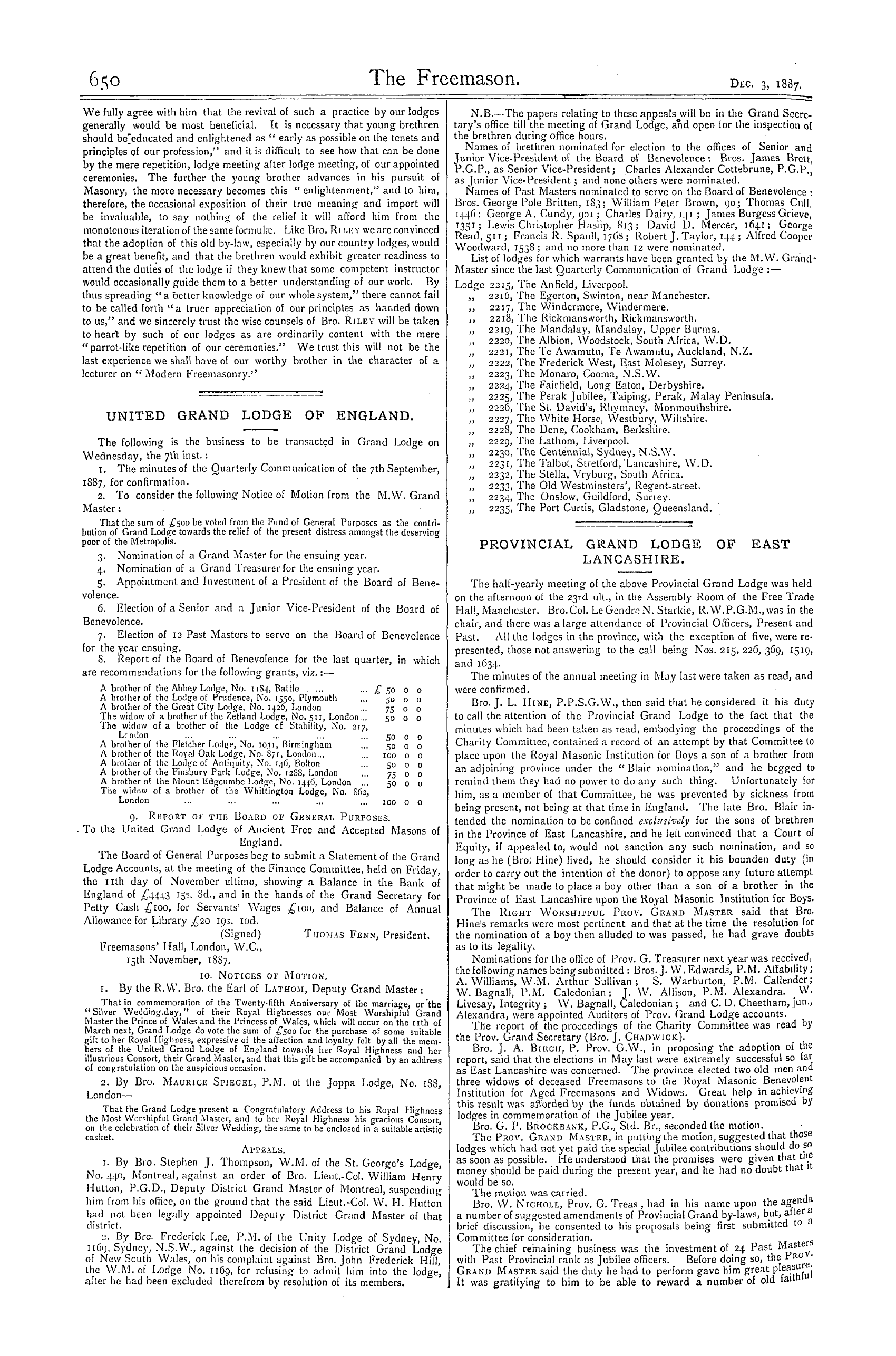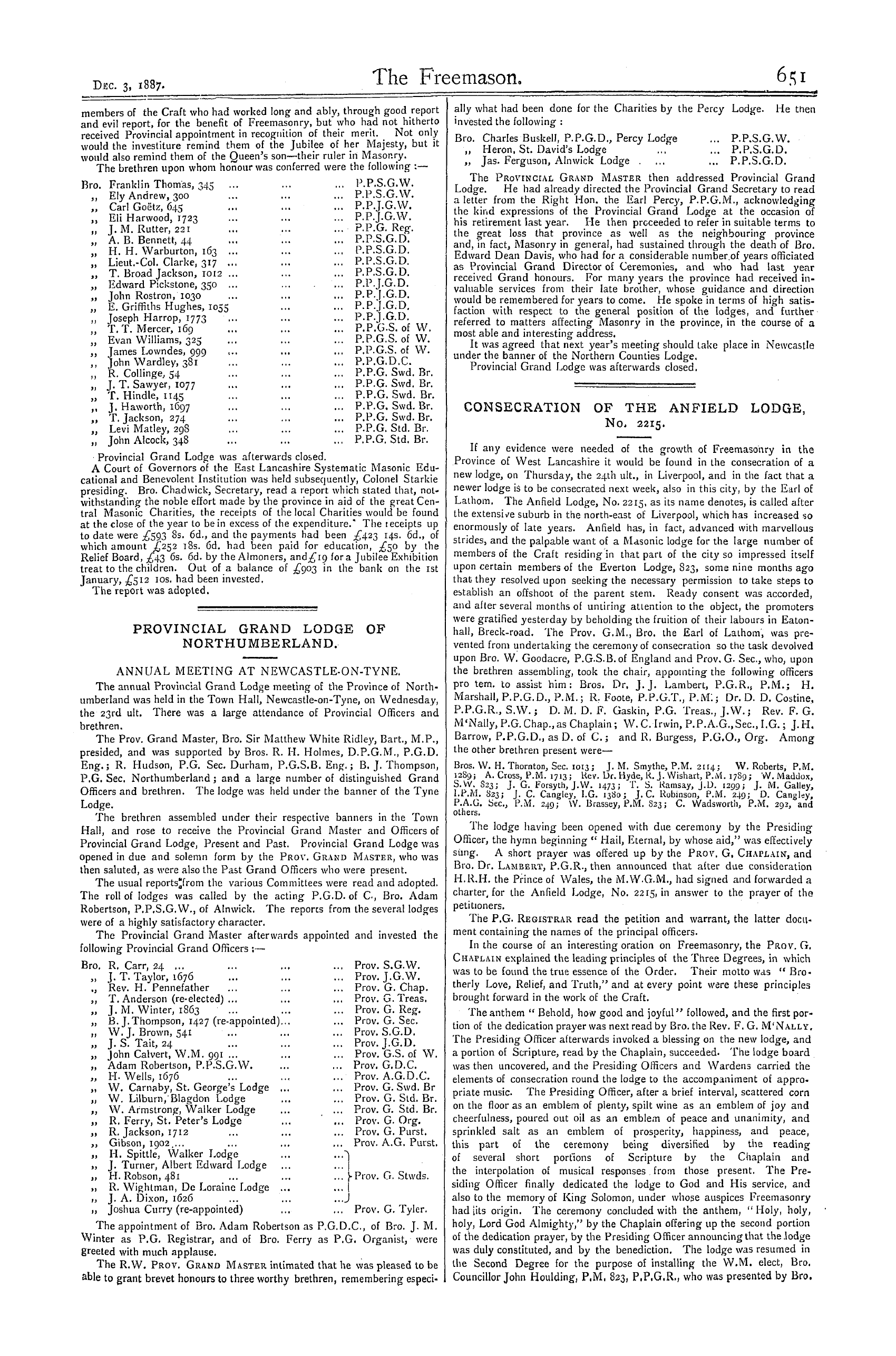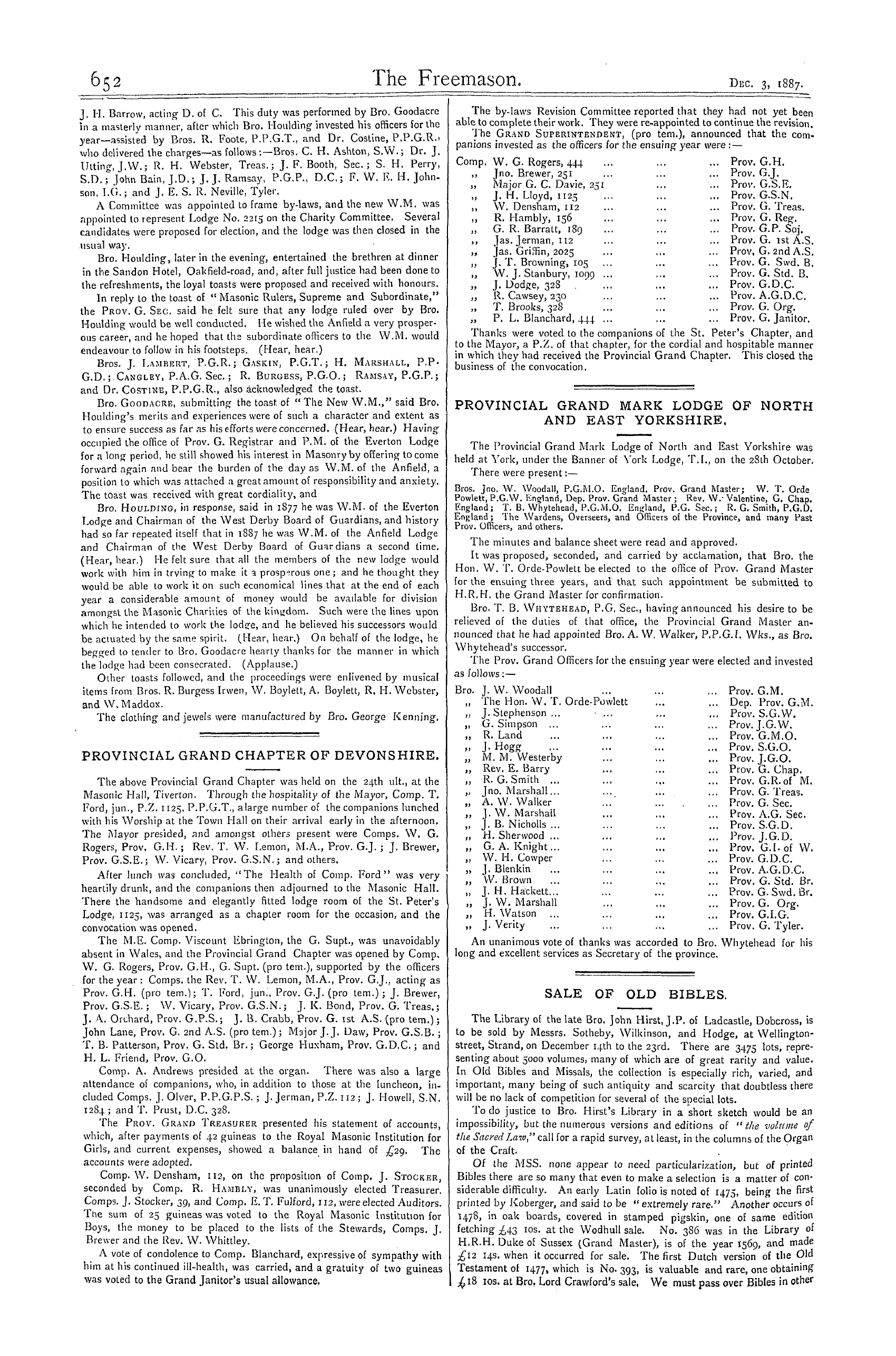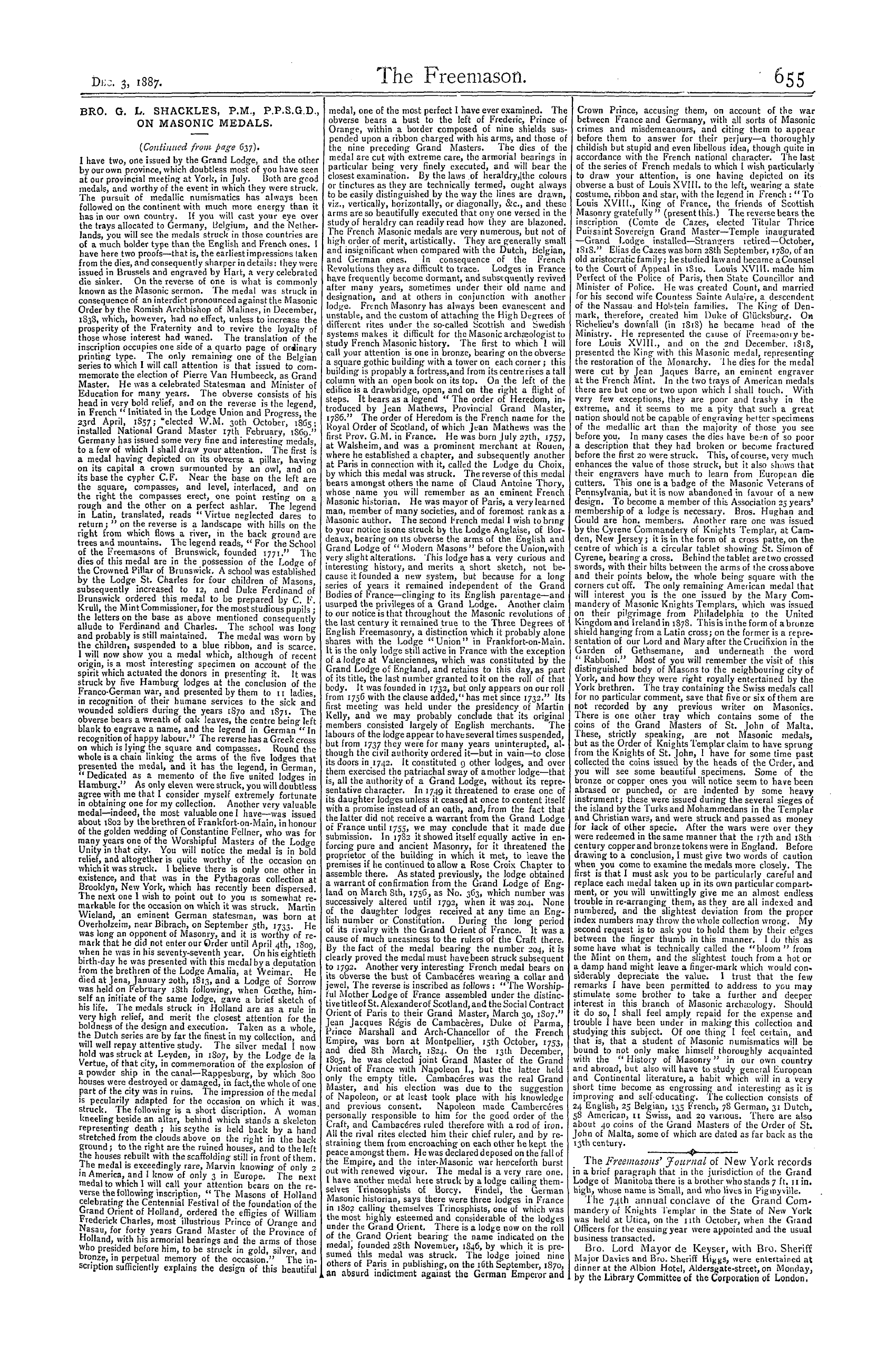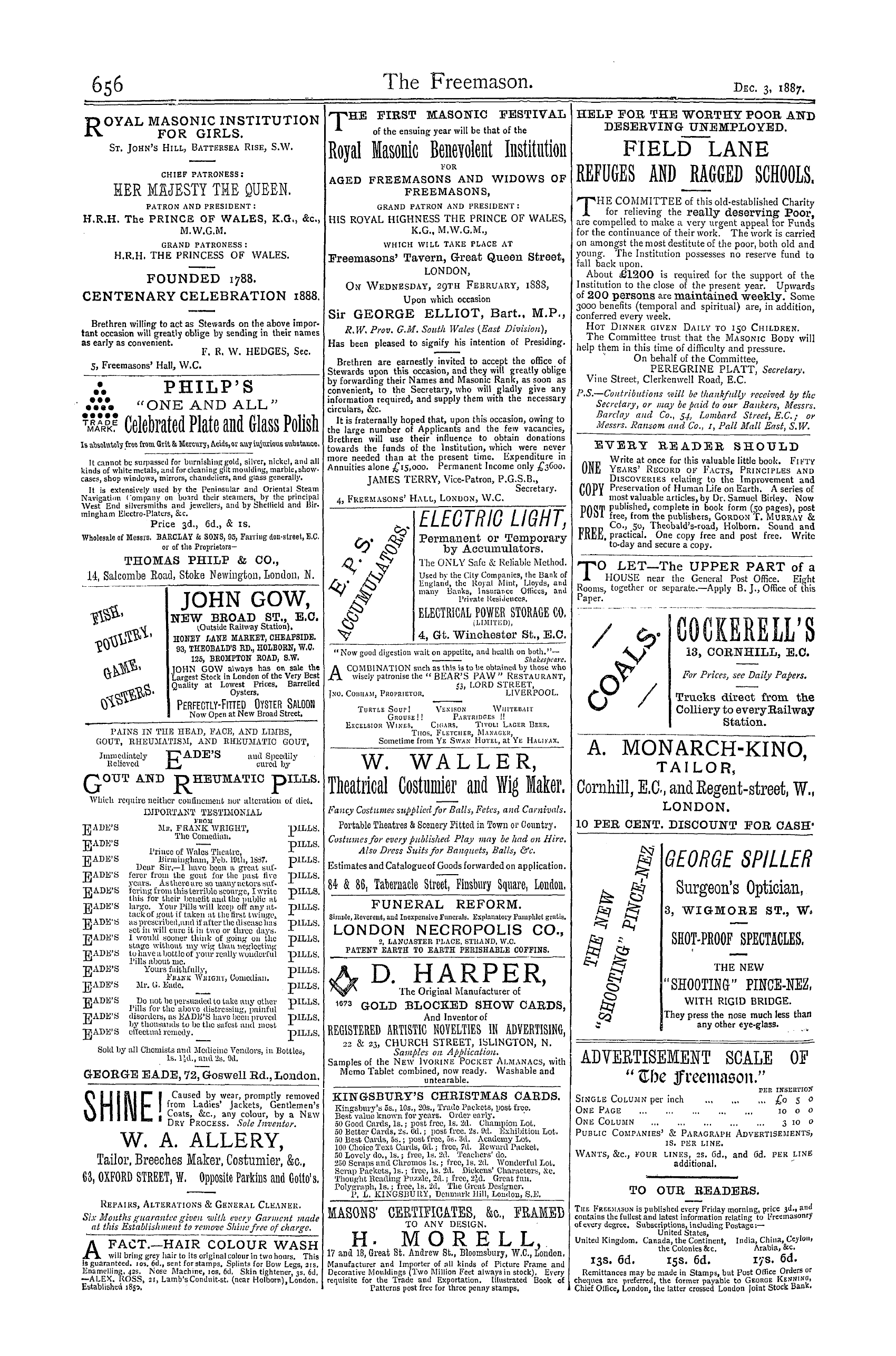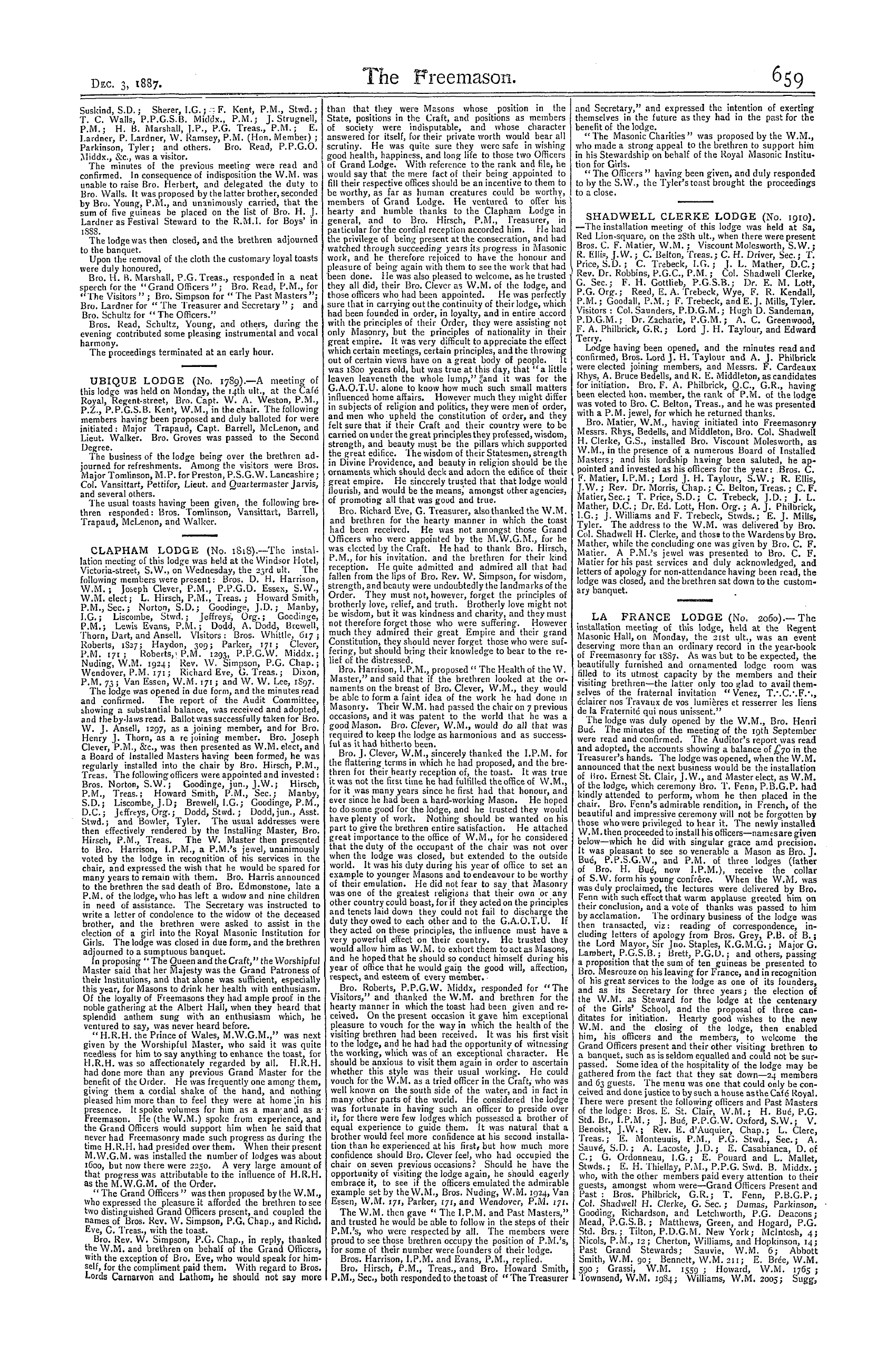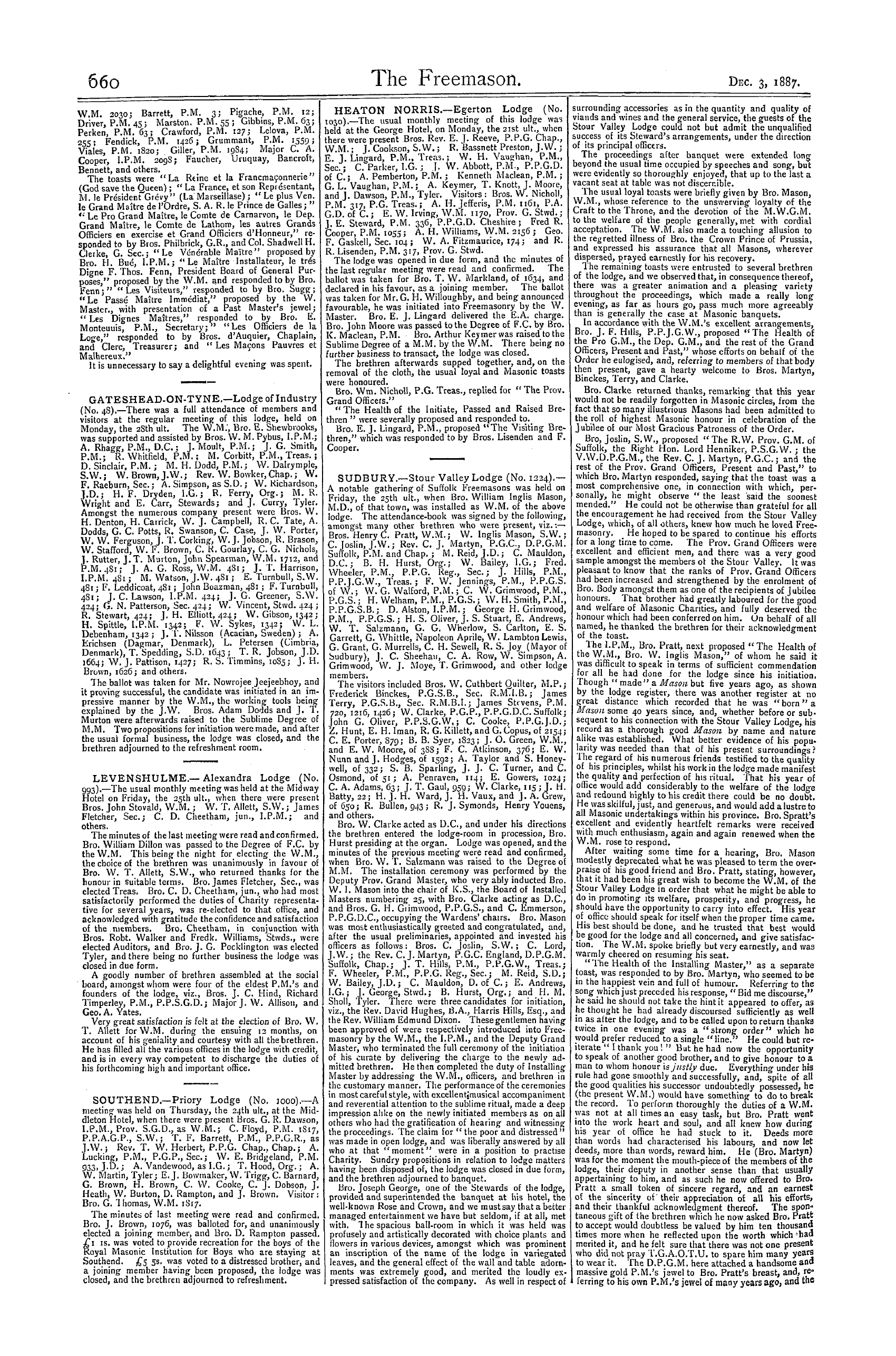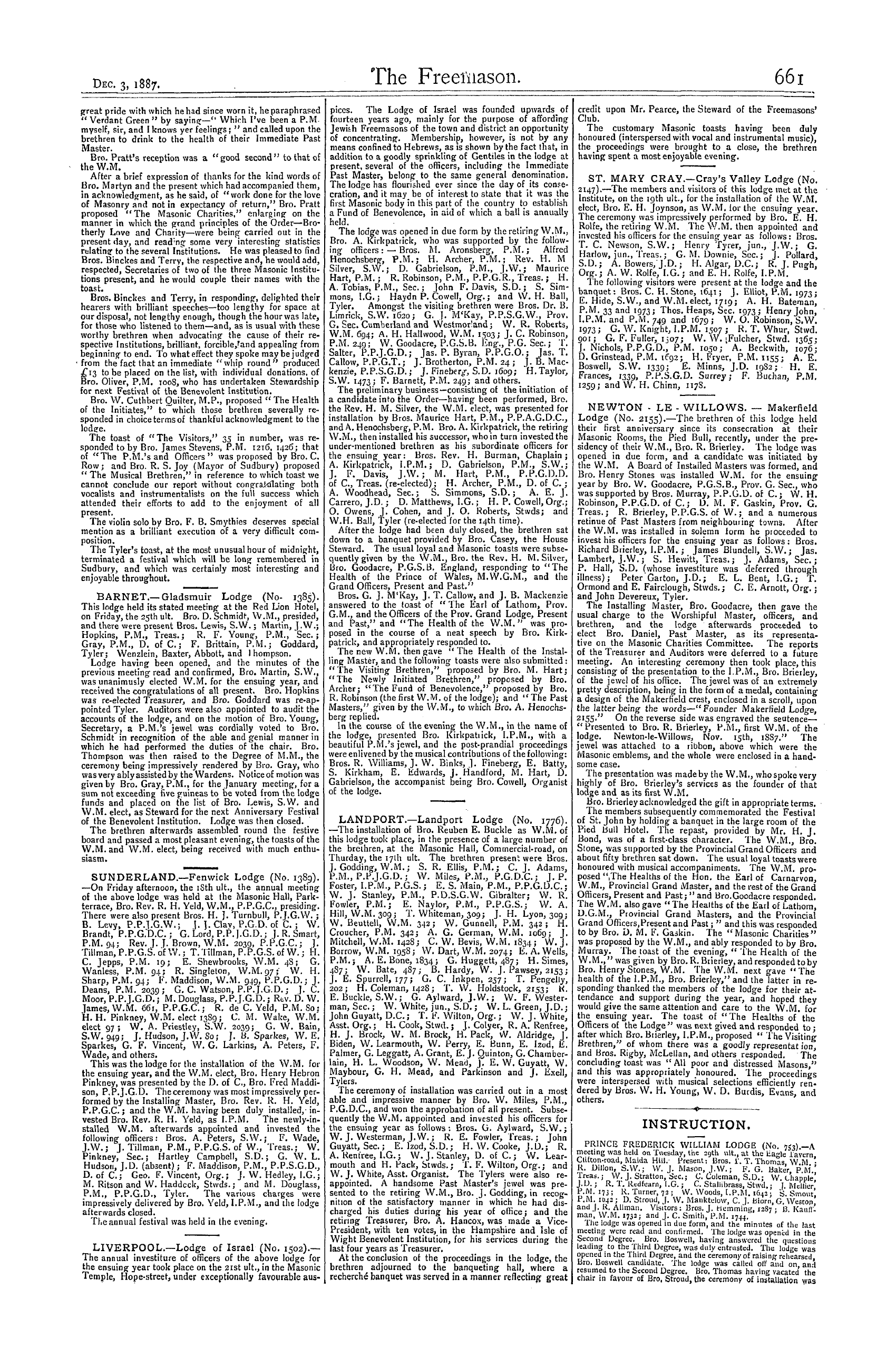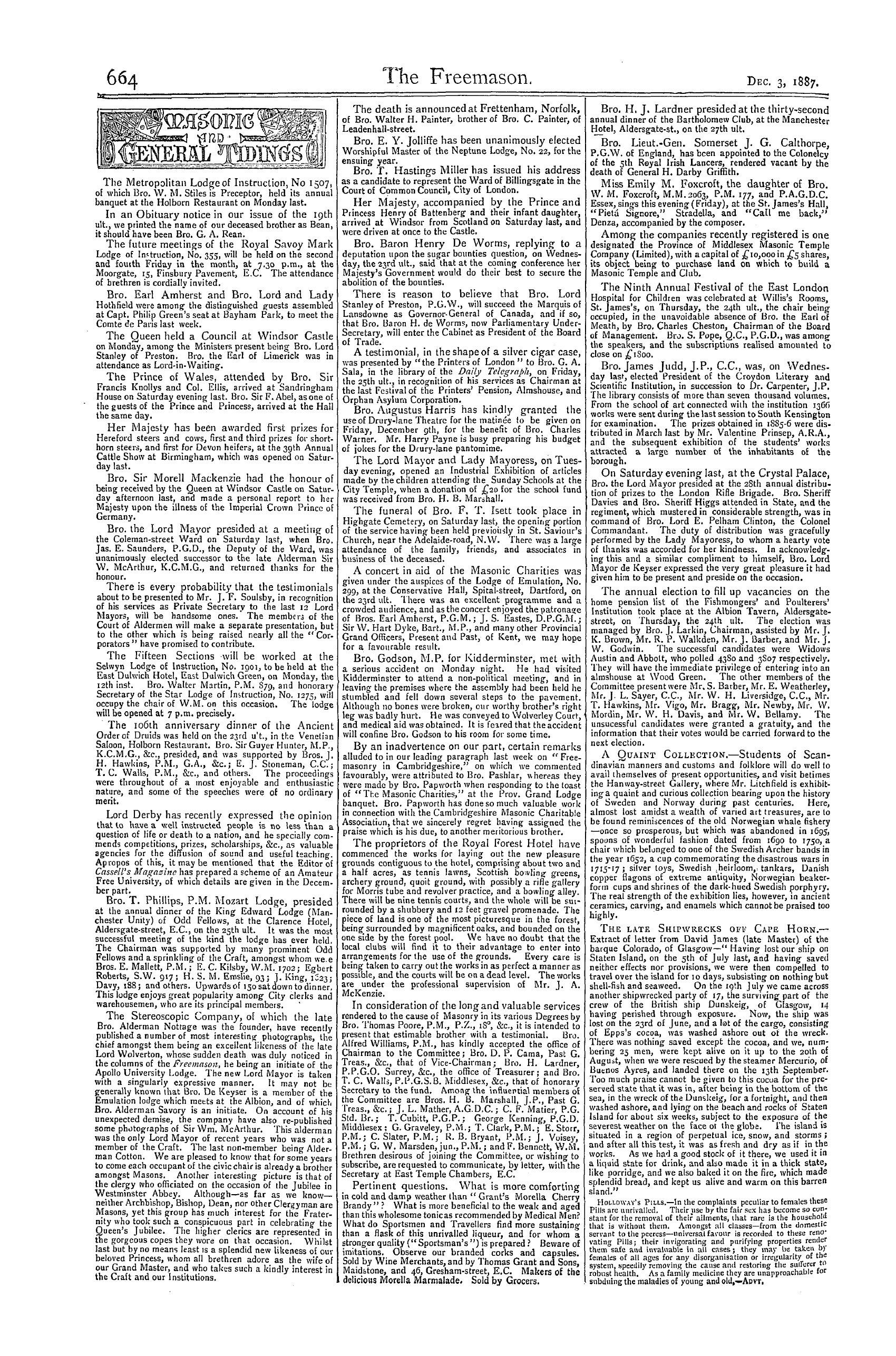Note: This text has been automatically extracted via Optical Character Recognition (OCR) software.
Sale Of Old Bibles.
languages and rest content with specifying a few out of the many of those in English . Coverdale is represented with the first edition of 1535 , of course , not perfect , there being a considerable portion wanting , the leaves being supplied b y Bagster ' s reprint . Even imperfect copies have fetched as many pounds as there are days in a year . The next number is Lord Cromwell's Bible of 1539 , followed by Matthew ' s [ Roger ' s ] of 1537 , with
several editions of 1546 , 1551 , and others . Of later copies of the " Great Bible , " known as Crammer ' s , there are two of 1540 , and one of 1541 , and also several re-issues of 1549 , & c . There are also three of the first edition of the " Bishop's Bible" of 1568 , two of 1584 , and one each of 1585 , 1588 , 1595 , and 1602 . Excepting the latter , which is a fine tall copy , and
probably the largest in existence , all the Bibles , so far enumerated , are catalogued as imperfect , or , " sold vvith all faults . " Of Genevan Bibles in folio there are no lack from 1576 to 1616 . The " Authorized" of 1611 , is reprinted with the second issue of what is known as the " she , " and the first edition of the "he " Bibles , both being incomplete . Then follows quite a number of peculiar issues , as " Thy Doctrine , " " Vinegar , " & c , & c .
In quartoes , the original edition of the "Genevan" of 1560 , is noteworthy , the " Judas" issue of 1610 , and several in the same size of the " Bishops " and other versions , not forgetting the rare first edition of the " Doway Bible " of 1609-10 ( lor Roman Catholics ) , one of which , in Bro . Lord Crawford ' s sale , made / iS " 5 s .
New Testaments in English begin with W . Tyndale ' s of 1549 , which is exceptionally rare , and then reprints , which answer well for those who cannot afford originals , go to make up the collection in that department . Of early printed books there are a few of importance , and generally speaking there are plenty of interesting items in the extensive catalogue almost on every page .
Freemasonry In Relation To Social Ethics And Modern Science.
FREEMASONRY IN RELATION TO SOCIAL ETHICS AND MODERN SCIENCE .
INSTALLATION ADDRESS BY BRO . JOSIAH MARTIN , W . M . LODGE PRINCE OF -VVALES , I 338 , B . C ., AUCKLAND . Freemasonry , which has ever been recognised as a system of morals , may be briefly defined as " a bond of Brotherhood , which unites all creeds in the grip of true friendship and the practice of real benevolence . " As a Society , it is based upon an equality of worth and merit , which is
independent of rank and fortune . Working by the golden rule— " Do unto others as you would they should do unto you "—and teaching that patient industry is the only sure road to success , it is felt by those vvho comprehend its essence to be a Socialism of love and mutual help—the dream of true reformers in all ages—as opposed to that Socialism of hatred and spoliation , which is the dread of every civilised society . The Institution is free and
voluntary , perfect freedom of inclination being required of every candidate . Its primary lessons mark the distinction between the freedom of liberty and fraternity , and the freedom of license and wrong ; and teach lhat freedom of will implies a mastery over , and freedom from vices , passions , and prejudices , and that the exercise of self-restraint is the surest evidence of the free will which is capable of giving to man the highest culture , and leading
him to the greatest heights of intellectual achievement . The distinguishing characteristic of Masonry is unselfishness , and the efforts of its members are directed to the service of their fellowmen , and to that sacrifice of self which this service demands . It encourages the Craftsman to give up every selfish propensity which might tend to injure others , and by oft repeated precept and example enforces that principle of self-sacrifice which is
acknowledged to be " the purest essence of the best religions . " The Masonic system of government proves that moral law , respect for order , and obedience to authority , can bind in a cohesive unity men of diverse sentiments and varied attainments by the influence of the principle— " None of us liveth to himself . " The ritual exhorts to a life of active beneficence and Charity , and its symbols are interpreted and explained in the beautiful
and familiar language of James the Apostle— " Pure religion and undefiled before God and the Father is this—to visit the widow and fatherless in their affliction , and to keep himself unspotted from the world . " The symbolic ceremony of initiation is designed to illustrate and explain that to the mind purified by virtue is opened the way of knowledge to light and truth . The same great lesson , as one of the most important principles of
Christianity , finds expression in that beautiful sermon from the Mount of Galilee , " Blessed are the pure in heart , for they shall see God . " Thus our First Degree inculcates a morality founded upon unselfishness , and establishes as its real or essential philosophy , that pure morality is the basis of perfect education . The latest writers of the most advanced school of modern thought , dealing with the vital and pressing questions of social reform , come
with singular unanimity of opinion to the conclusion "That only on good unselfish instincts can a trustworthy morality repose , " and " A perfect ideal education is that which habitually stimulates and inflames the good passions and discourages the bad . " Thus , Ancient Freemasonry and Modern Sociology unite in the grand and noble purpose of serving the higher interests of our greater brotherhood—Humanity . In the Second Degree ,
under the symbol of the open porch , we typify the entrance to the temple of wisdom , inviting those to enter vvho have been purified in the outer courts , and introducing the Craftsman into the hidden mysteries of nature and science . Here step by step vve ascend the winding stair of Masonic knowledge , seeking the light of wisdom which shines from above , until at length , after many trials , we enter the middle chamber of the temple
of truth , where as true and faithful Craftsmen we shall receive the due reward of our labour , when we discover the mystic symbol—the trinity of purity , truth , and power—which denotes God , the Grand Geometrician of the Universe . This familiar allegory is an illustration of the search for truth , which distinguishes true scientific enquiry ,
and the gradual ascent through a pure morality to the highest wisdom , is a symbol of the perfect union of religion and science . The founders of our Craft , the magi of ancient Egypt , illustrated their great moral principles by symbols , of which the Pyramid is one great and enduring type which well represents our Institution .
1 . Its Foundation is Unselfishness . 2 . Its Base—Morality . 3- Its Structure—Knowledge . 4 . Its Cement—Friendship . S « Its Apex—Truth . With an unselfish morality as our fundamental principle , cherished in our hearts , cultivated in our homes , taught in our schools , practised in busi- *
Freemasonry In Relation To Social Ethics And Modern Science.
ness , and exemplified in society we may rear our Pyramid of Science without fear of failure ; for truth shall endure for ever . Science alone fails to satisfy the nature of man . To seek the regeneration of our race by philosophy without morals is to reverse the Pyramid and ensure the disappointment of failure and ruin . But our principles , thus securely founded will outlast the storms of conflict which may rage between
superstitioncalling itself religion , —and error—vaunting itself as science , —as the grand old Pyramids have withstood the storms and ravages of time . As the thread to the crystal , so society requires some concrete forms about which to crystallise or unite . From time immemorial symbols and ceremonies have been successfully used to impress the senses and thus to open the gates of knowledge , the avenues of the mind . Our Government , by the symbols worn by the principal officers , is shown to be a morality based upon equity
and administered with justice ; and every symbol , sign , and word used in our rites has its occult or hidden meaning , to discover which is well worthy the attention of every earnest member of the Craft . The lodge is our safe retreat , whither we escape from ihe trials and toils consequent upon the daily struggle for sustenance , place , and power , and where vve work—with brotherly love , relief , and truth—to rebuild the shattered fragments of human society into the grand ideal unity of social order , the Universal Temple of the Great Architect of the Universe .
Superintendents Of English Buildings In The Middle Ages.—Ii.
SUPERINTENDENTS OF ENGLISH BUILDINGS IN THE MIDDLE AGES . —II .
Mr . Wyatt Papworth is provokingly brief in his reference to the " Legendary History '' of the Freemasons , possibly because , as he truly says , "This subject has been treated very thoroughly by Mr . Gould , " I regret , however , the little space given to this division of the Paper , for , to my mind , the more extended the enquiries as to the character , scope , and laws of the " Old Charges , " the stronger the evidence is found to be , which links us as a Society to the older organisations of the same name . He
says of them j " They all bear evidence not only of being copies of some earlier documents , but of the copyists not being versed in what they were transcribing . " As to the latter assertion , I consider it is much too strong , but it is not necessary now to attempt any defence of some , at least , of the transcribers , for , after all , we have rather to deal with the general statements to be found in these numerous , curious , and valuable rolls or books , about which the transcribers all substantially agree .
Mr . Papworth acknowledges that these documents—" regulations and by-laws , as they may be termed " —were undoubtedly compiled for the use of a body of working Masons ; that they referred to the " yearly assemblies" ( " of some companies or gilds , I consider" ) , and no doubt these are the meetings aimed at by the statutes ; to a lodge as a workshop ; directing " the most cunning to be Governor of the work , and to be called Master , "
taking of apprentices , workmanship , brotherly love , moral conduct , punishment of offenders , and observance of their " articles and points , " or bylaws , as they may be termed , many of which appear very similar to the precepts contained in the indentures of apprentices of the last century . He also notes the fact that " there are not , in the Masons' ordinances , any references to secret signs , " * and then hazards the remark that there are no
references to Masons' marks—monograms , as they might be properly called . " The author naively suggests as to the question of " marks" that " probably it will be said by some that I know nothing about the matter . " Some may say so , but no member of the Masonic Craft , I apprehend is likely to , and , at all events , if any so do , it would be incorrect . Few , if any , students of the subject of building , viewed from an Archaeological stand
point , have been more industrious and zealous than Mr . Papworth , and therefore we may be assured that when he " puts his foot down , " the evidence he has accumulated with such care and pains , warrants him according ! }' . It is however quite possible he may have overlooked the exact bearing and significance of some of the attested facts , and hence I should like to take exception to one or two of his objections , urged against the
claims of the present Society being the lineal descendant of the old Freemasons . He need not fear the " concentrated ire of some thousands of the members of that fellowship , " for anything to be found in the paper as to that Body , though he may have cause to dread " the execration of some 400 Wykehamites , " as they will be recruited from his own Society . Should he desire any aid to withstand the opposilion of the latter , he may draw upon several members of the Craft who share his views on the disputed
point in question . Mr . Papworth states that whenever the word "Freemason" simply occurs , " it must be understood only to apply to the practical Mason who worked freestone . " I am unable quite to follow this statement , and find myself in good company , for neither can Bro . Gould . Indeed , with his history before me , and especially Chapter XIV ., it seems clear that Gould
has the facts on his side . He " contends that the class of persons from whom the Freemasons of Warrington , Staffordshire , Chester , York , London , and their congeners in the the seventeenth century , derived the descriptive title which became the inheritance of the Grand Lodge of England , were free men , and Masons ot Guilds or Companies . '' He proves that the prefix free was applied to Carpenters in 1666 , to " Sewers" in the filteenth century ( styled also " Free Brotherys ") to men who belonged to a variety of trades
in Durham in 1671 , and to others , the exercise of such trades being contingent on the necessary freedom being obtained . This is still clearer , on relerence to the Scottish statutes and records . It is just probable that the word originally was employed in reference to free-sione work , but surely later on the prefix meant Hie freedom to be a Mason , Carpenter , Sewer , & c , as noted for the filteenth and later centuries . The very word " cowan " suggests the lack of freedom to work , -j *
As to there Deing no references to Masons' marks in the Masonic ordinances , I refer Mr . Papworth to the "Schaw statutes" of 1598 , wherein provision is made for the reception by lodges of Master or Fellow and that "his name and mark insert , " the lodges in the seventeenth century
generally requiring marks to be selected and booked by the neophytes , whether operative or speculative as the records testify . One gentleman , with other Masons who were present as members of the Lodge of Edinburgh " affi . xity'' . markis" in the > ear 1600 ; and many are the instances of noblemen and gentlemen acting in like manner through that century .
Note: This text has been automatically extracted via Optical Character Recognition (OCR) software.
Sale Of Old Bibles.
languages and rest content with specifying a few out of the many of those in English . Coverdale is represented with the first edition of 1535 , of course , not perfect , there being a considerable portion wanting , the leaves being supplied b y Bagster ' s reprint . Even imperfect copies have fetched as many pounds as there are days in a year . The next number is Lord Cromwell's Bible of 1539 , followed by Matthew ' s [ Roger ' s ] of 1537 , with
several editions of 1546 , 1551 , and others . Of later copies of the " Great Bible , " known as Crammer ' s , there are two of 1540 , and one of 1541 , and also several re-issues of 1549 , & c . There are also three of the first edition of the " Bishop's Bible" of 1568 , two of 1584 , and one each of 1585 , 1588 , 1595 , and 1602 . Excepting the latter , which is a fine tall copy , and
probably the largest in existence , all the Bibles , so far enumerated , are catalogued as imperfect , or , " sold vvith all faults . " Of Genevan Bibles in folio there are no lack from 1576 to 1616 . The " Authorized" of 1611 , is reprinted with the second issue of what is known as the " she , " and the first edition of the "he " Bibles , both being incomplete . Then follows quite a number of peculiar issues , as " Thy Doctrine , " " Vinegar , " & c , & c .
In quartoes , the original edition of the "Genevan" of 1560 , is noteworthy , the " Judas" issue of 1610 , and several in the same size of the " Bishops " and other versions , not forgetting the rare first edition of the " Doway Bible " of 1609-10 ( lor Roman Catholics ) , one of which , in Bro . Lord Crawford ' s sale , made / iS " 5 s .
New Testaments in English begin with W . Tyndale ' s of 1549 , which is exceptionally rare , and then reprints , which answer well for those who cannot afford originals , go to make up the collection in that department . Of early printed books there are a few of importance , and generally speaking there are plenty of interesting items in the extensive catalogue almost on every page .
Freemasonry In Relation To Social Ethics And Modern Science.
FREEMASONRY IN RELATION TO SOCIAL ETHICS AND MODERN SCIENCE .
INSTALLATION ADDRESS BY BRO . JOSIAH MARTIN , W . M . LODGE PRINCE OF -VVALES , I 338 , B . C ., AUCKLAND . Freemasonry , which has ever been recognised as a system of morals , may be briefly defined as " a bond of Brotherhood , which unites all creeds in the grip of true friendship and the practice of real benevolence . " As a Society , it is based upon an equality of worth and merit , which is
independent of rank and fortune . Working by the golden rule— " Do unto others as you would they should do unto you "—and teaching that patient industry is the only sure road to success , it is felt by those vvho comprehend its essence to be a Socialism of love and mutual help—the dream of true reformers in all ages—as opposed to that Socialism of hatred and spoliation , which is the dread of every civilised society . The Institution is free and
voluntary , perfect freedom of inclination being required of every candidate . Its primary lessons mark the distinction between the freedom of liberty and fraternity , and the freedom of license and wrong ; and teach lhat freedom of will implies a mastery over , and freedom from vices , passions , and prejudices , and that the exercise of self-restraint is the surest evidence of the free will which is capable of giving to man the highest culture , and leading
him to the greatest heights of intellectual achievement . The distinguishing characteristic of Masonry is unselfishness , and the efforts of its members are directed to the service of their fellowmen , and to that sacrifice of self which this service demands . It encourages the Craftsman to give up every selfish propensity which might tend to injure others , and by oft repeated precept and example enforces that principle of self-sacrifice which is
acknowledged to be " the purest essence of the best religions . " The Masonic system of government proves that moral law , respect for order , and obedience to authority , can bind in a cohesive unity men of diverse sentiments and varied attainments by the influence of the principle— " None of us liveth to himself . " The ritual exhorts to a life of active beneficence and Charity , and its symbols are interpreted and explained in the beautiful
and familiar language of James the Apostle— " Pure religion and undefiled before God and the Father is this—to visit the widow and fatherless in their affliction , and to keep himself unspotted from the world . " The symbolic ceremony of initiation is designed to illustrate and explain that to the mind purified by virtue is opened the way of knowledge to light and truth . The same great lesson , as one of the most important principles of
Christianity , finds expression in that beautiful sermon from the Mount of Galilee , " Blessed are the pure in heart , for they shall see God . " Thus our First Degree inculcates a morality founded upon unselfishness , and establishes as its real or essential philosophy , that pure morality is the basis of perfect education . The latest writers of the most advanced school of modern thought , dealing with the vital and pressing questions of social reform , come
with singular unanimity of opinion to the conclusion "That only on good unselfish instincts can a trustworthy morality repose , " and " A perfect ideal education is that which habitually stimulates and inflames the good passions and discourages the bad . " Thus , Ancient Freemasonry and Modern Sociology unite in the grand and noble purpose of serving the higher interests of our greater brotherhood—Humanity . In the Second Degree ,
under the symbol of the open porch , we typify the entrance to the temple of wisdom , inviting those to enter vvho have been purified in the outer courts , and introducing the Craftsman into the hidden mysteries of nature and science . Here step by step vve ascend the winding stair of Masonic knowledge , seeking the light of wisdom which shines from above , until at length , after many trials , we enter the middle chamber of the temple
of truth , where as true and faithful Craftsmen we shall receive the due reward of our labour , when we discover the mystic symbol—the trinity of purity , truth , and power—which denotes God , the Grand Geometrician of the Universe . This familiar allegory is an illustration of the search for truth , which distinguishes true scientific enquiry ,
and the gradual ascent through a pure morality to the highest wisdom , is a symbol of the perfect union of religion and science . The founders of our Craft , the magi of ancient Egypt , illustrated their great moral principles by symbols , of which the Pyramid is one great and enduring type which well represents our Institution .
1 . Its Foundation is Unselfishness . 2 . Its Base—Morality . 3- Its Structure—Knowledge . 4 . Its Cement—Friendship . S « Its Apex—Truth . With an unselfish morality as our fundamental principle , cherished in our hearts , cultivated in our homes , taught in our schools , practised in busi- *
Freemasonry In Relation To Social Ethics And Modern Science.
ness , and exemplified in society we may rear our Pyramid of Science without fear of failure ; for truth shall endure for ever . Science alone fails to satisfy the nature of man . To seek the regeneration of our race by philosophy without morals is to reverse the Pyramid and ensure the disappointment of failure and ruin . But our principles , thus securely founded will outlast the storms of conflict which may rage between
superstitioncalling itself religion , —and error—vaunting itself as science , —as the grand old Pyramids have withstood the storms and ravages of time . As the thread to the crystal , so society requires some concrete forms about which to crystallise or unite . From time immemorial symbols and ceremonies have been successfully used to impress the senses and thus to open the gates of knowledge , the avenues of the mind . Our Government , by the symbols worn by the principal officers , is shown to be a morality based upon equity
and administered with justice ; and every symbol , sign , and word used in our rites has its occult or hidden meaning , to discover which is well worthy the attention of every earnest member of the Craft . The lodge is our safe retreat , whither we escape from ihe trials and toils consequent upon the daily struggle for sustenance , place , and power , and where vve work—with brotherly love , relief , and truth—to rebuild the shattered fragments of human society into the grand ideal unity of social order , the Universal Temple of the Great Architect of the Universe .
Superintendents Of English Buildings In The Middle Ages.—Ii.
SUPERINTENDENTS OF ENGLISH BUILDINGS IN THE MIDDLE AGES . —II .
Mr . Wyatt Papworth is provokingly brief in his reference to the " Legendary History '' of the Freemasons , possibly because , as he truly says , "This subject has been treated very thoroughly by Mr . Gould , " I regret , however , the little space given to this division of the Paper , for , to my mind , the more extended the enquiries as to the character , scope , and laws of the " Old Charges , " the stronger the evidence is found to be , which links us as a Society to the older organisations of the same name . He
says of them j " They all bear evidence not only of being copies of some earlier documents , but of the copyists not being versed in what they were transcribing . " As to the latter assertion , I consider it is much too strong , but it is not necessary now to attempt any defence of some , at least , of the transcribers , for , after all , we have rather to deal with the general statements to be found in these numerous , curious , and valuable rolls or books , about which the transcribers all substantially agree .
Mr . Papworth acknowledges that these documents—" regulations and by-laws , as they may be termed " —were undoubtedly compiled for the use of a body of working Masons ; that they referred to the " yearly assemblies" ( " of some companies or gilds , I consider" ) , and no doubt these are the meetings aimed at by the statutes ; to a lodge as a workshop ; directing " the most cunning to be Governor of the work , and to be called Master , "
taking of apprentices , workmanship , brotherly love , moral conduct , punishment of offenders , and observance of their " articles and points , " or bylaws , as they may be termed , many of which appear very similar to the precepts contained in the indentures of apprentices of the last century . He also notes the fact that " there are not , in the Masons' ordinances , any references to secret signs , " * and then hazards the remark that there are no
references to Masons' marks—monograms , as they might be properly called . " The author naively suggests as to the question of " marks" that " probably it will be said by some that I know nothing about the matter . " Some may say so , but no member of the Masonic Craft , I apprehend is likely to , and , at all events , if any so do , it would be incorrect . Few , if any , students of the subject of building , viewed from an Archaeological stand
point , have been more industrious and zealous than Mr . Papworth , and therefore we may be assured that when he " puts his foot down , " the evidence he has accumulated with such care and pains , warrants him according ! }' . It is however quite possible he may have overlooked the exact bearing and significance of some of the attested facts , and hence I should like to take exception to one or two of his objections , urged against the
claims of the present Society being the lineal descendant of the old Freemasons . He need not fear the " concentrated ire of some thousands of the members of that fellowship , " for anything to be found in the paper as to that Body , though he may have cause to dread " the execration of some 400 Wykehamites , " as they will be recruited from his own Society . Should he desire any aid to withstand the opposilion of the latter , he may draw upon several members of the Craft who share his views on the disputed
point in question . Mr . Papworth states that whenever the word "Freemason" simply occurs , " it must be understood only to apply to the practical Mason who worked freestone . " I am unable quite to follow this statement , and find myself in good company , for neither can Bro . Gould . Indeed , with his history before me , and especially Chapter XIV ., it seems clear that Gould
has the facts on his side . He " contends that the class of persons from whom the Freemasons of Warrington , Staffordshire , Chester , York , London , and their congeners in the the seventeenth century , derived the descriptive title which became the inheritance of the Grand Lodge of England , were free men , and Masons ot Guilds or Companies . '' He proves that the prefix free was applied to Carpenters in 1666 , to " Sewers" in the filteenth century ( styled also " Free Brotherys ") to men who belonged to a variety of trades
in Durham in 1671 , and to others , the exercise of such trades being contingent on the necessary freedom being obtained . This is still clearer , on relerence to the Scottish statutes and records . It is just probable that the word originally was employed in reference to free-sione work , but surely later on the prefix meant Hie freedom to be a Mason , Carpenter , Sewer , & c , as noted for the filteenth and later centuries . The very word " cowan " suggests the lack of freedom to work , -j *
As to there Deing no references to Masons' marks in the Masonic ordinances , I refer Mr . Papworth to the "Schaw statutes" of 1598 , wherein provision is made for the reception by lodges of Master or Fellow and that "his name and mark insert , " the lodges in the seventeenth century
generally requiring marks to be selected and booked by the neophytes , whether operative or speculative as the records testify . One gentleman , with other Masons who were present as members of the Lodge of Edinburgh " affi . xity'' . markis" in the > ear 1600 ; and many are the instances of noblemen and gentlemen acting in like manner through that century .

